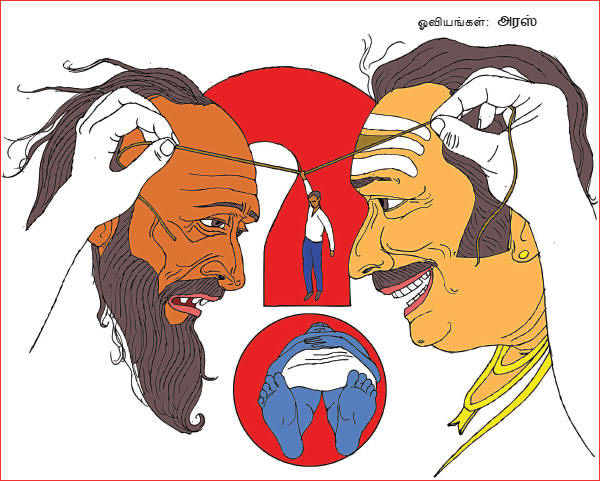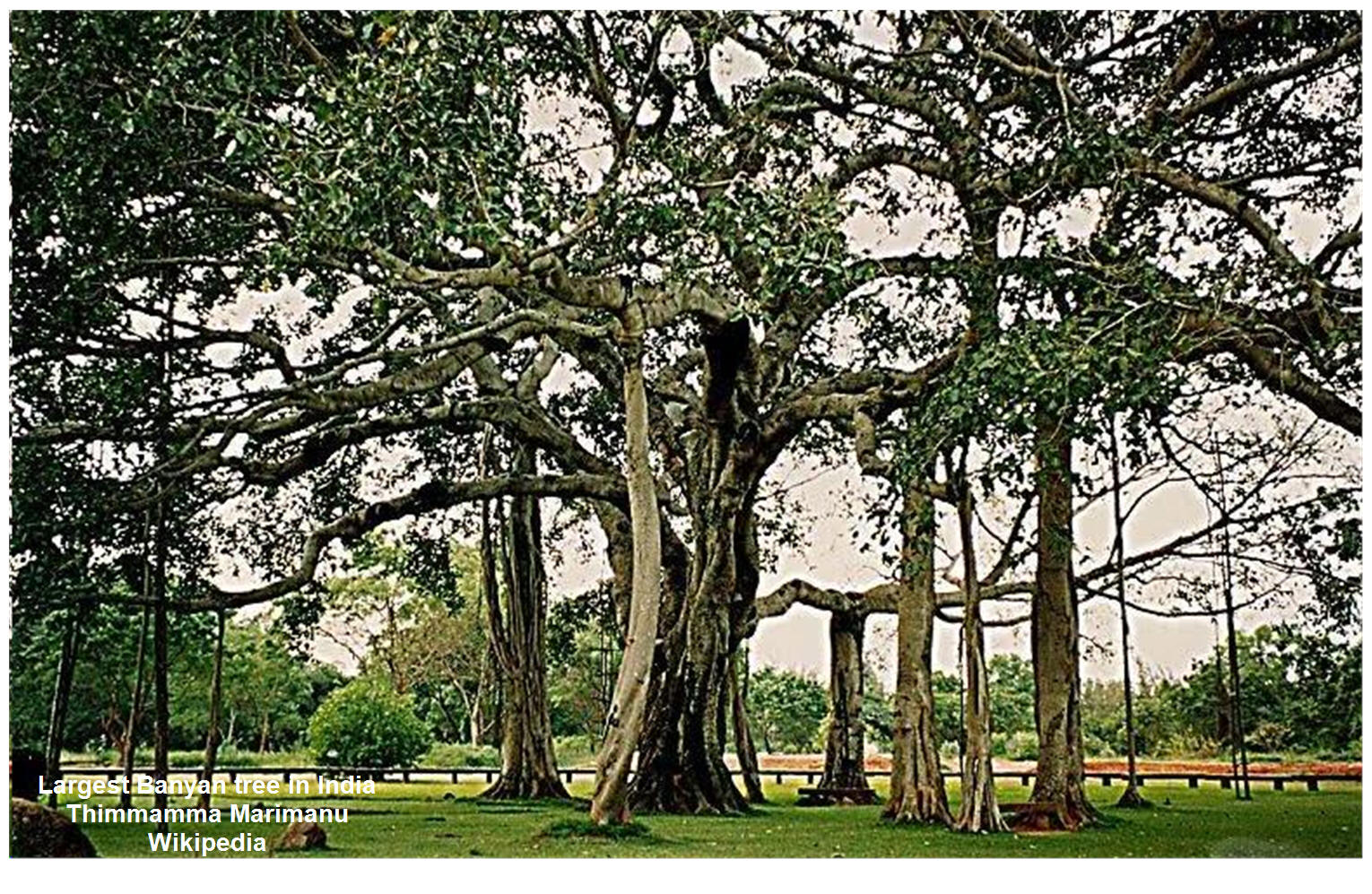The great human power
Dr. T.S. Narayanaswamy
The maxim of our elders is, “Rare indeed is human birth.” The Sastras
declare that of all the creations, only man with six senses is Jīva
Sṛṣṭi with many inherent powers.
We earned human birth with or without our volition. Our Life dawned on
earth without our knowledge whether there was or was not a primordial desire for
life, a compulsion, an ordainment or circumstances. Because of one or
more of them,
most of us live or have an inherent desire to live.
Man’s birth and death have an element of uncertainty.
Intellect and science have no control over an event called death.
Death as an event is an absolute certainty. No one can time it or
prevent it. We wish
death will not happen to us. It is unnatural, impractical and false
belief. Believing in nonexistent eternal life, we desire to live
forever.

When we continue living, what do we desire to do? But, what do we do in
reality? Everyone must
think about it. Based on this, an understanding of a unique nature or
disposition of a man (தனித்தன்மை)
becomes evident.
Is development of the unique disposition remain under the authority and
power of the individual? Is its formation beyond our power or under some
unknown principle? Is life bound by rules or principles? Is life a
nature and function of self-will (or free will =
தன்னிச்சை)?
The effort to seek answers to these questions and the attendant
experience are an accomplishment. If life is not under our control and
functions under unknown rules or principles, do we have a way to bring it under
our control? Is that path scientific? Is it the path of religion based
on Sastras? Is it a self-chosen path? We should research it.
Many people, having found success in their chosen paths and lofty
principles, offer disparate spiritual advice.
|
தர்மம் தலைகாக்கும்;
|
Dharma will safeguard your head;
|
|
முயற்சி திருவினையாக்கும்; |
Effort brings holy deed;
|
|
முயன்றால் முடியாதது இல்லை; |
With effort nothing is impossible; |
|
உண்மை உயர்வைத் தரும்; |
Truth offers loftiness; |
|
சத்தியமே ஜெயம்! |
Truth wins. |
It is easy to teach; but, it is hard to put it in practice.
(Easier said than done.)
We bear witness to and face innumerable failures in our endeavors; we
ourselves may fit the description: 1) Hard workers failed to realize
their aspirations and goals. 2) The tremblers: Extraordinary attempts failed to yield
fruits. 3) The good and soft souls: Their straightforward outlook did not advance
their carrier. 4) The stumblers: Despite their fitness and ability, they
stumbled and fell through the cracks. 5) The devout miserables: Though they were devout there was no
tranquility, happiness or freedom from imminence. Of the 10,000
servitors, only ten people enjoy blessings with luxurious living,
respect, esteem, riches, high position, title and adoration with
garlands. The rest are ‘unwept,
unhonored and unsung’
as told by
Sir Walter Scott (1771–1832). They never enjoyed a life of ease and
disport, and
disappeared without a name or fame, having worked themselves to the
bone, borne hardships… Nobody has
offered a scientific or philosophical explanation for
these outcomes. We can consign him to the category of fate. Or we can
give him a moniker, ‘Failure (=
Schlimazel = Always an unlucky person).’
|
|
|
“Breathes there the man?” |
|
Sir Walter Scott (1771–1832)
unwept, unhonored and unsung’ |
Is it their fault they fell into the abyss in their lives?
Is it lack of ability? Unfitness?
Lack of opportunity?
Plain misfortune? Only when
you find answers to these questions, we can find resolution to these
problems. Though we may not resolve these questions, we can analyze the
causes.
The sower of
Thinai
(millet) will reap the millet. The sower of
Vinai
(action, deed)
will reap Vinai. Here Thinai and Vinai are rhymers. We see today
millions of farmers (sowers) in a crisis. We see today millions of
crooked dealers having sowed soothing words reap an easy life.
The religionists expound and point to the past-life merits and
demerits (புண்ய,
பாவம்
= merits and sins) and offer solace to the suffering embodied souls. They do not explain the real reasons
behind the disparity.
Newton says, “For
every action, there is an equal and opposite reaction.”
In today’s world, evil does not beget evil but yields all that is
desirable. The good suffer
(and the bad prosper). Newton’s law is anomalous in its application to
people.
Should we formulate a new general theory, based on observance that the
evil doers reap goodness; the dishonest receive coveted awards; only the liars
get to eat sumptuous meals? Certainly not.
We see upright people, celebrated over ages
who distinguished themselves with hard work, honesty, sagacity…
We know the history of mere men who ascend the ladder of success to
great heights and fall into the bottomless hell. We know in truth-saying
there are winners and losers. Is it the strength of the truth or its
weakness? Or is it the results of past-life good and evil deeds.
Now many questions have come to the surface. We must find underlying
basis and proof for the answers. To explain further, we should subject
the Hindu religion itself to a critical evaluation (experimental path)
under the aegis of the principles and tenets in Vedas and Upanishads. The elders’
experiences and recommended paths ofcourse add color to the precepts; our
analytical skills and wisdom are the tools. These proposals are the
guiding light for the experiment, which is the object of this series of
articles.
--The tree will grow
God is ‘seeable!’
Watch closely the sprouting of the seed. The sprout grows upwards, and
downwards too. The
down-growing roots anchor the plant and seek the nutrients in the soil. The up-growing
branches, leaves, flowers, and fruits both unripe and ripe are of use to
others. They are the next generation seeds. Man desires to grow upwards
(attain liberation or Moksa) for his own selfish reasons.
Let us look at the story of Banyan tree.
A Guru one day taught about his disciples the omnipresent god. One
student posed a question, “Guru, is god seeable with our eyes?”
Guru: Why not. It is easy to see him.
Disciple: If that is true, can you show me god?
Guru: Let me show you. You go to that Banyan tree and bring me a ripe fruit. Besides, bring me a knife.
Disciple brought the fruit and the knife.
Guru: What is this?
Disciple: Banyan fruit. The
Guru asked him to cut it into two halves.
Guru: What do you see inside the fruit?
Disciple: a small seed(s). Guru asked him to cut the seed into two
pieces. More cutting ensued. The guru asked him, “What do you see?”
Disciple: I see nothing.
Guru: Look closely. A banyan tree is visible.
The disciple understood there are seeds in the tree and tree in
the seed and likewise, God is all-pervasive.
--A story from Upanishad.

